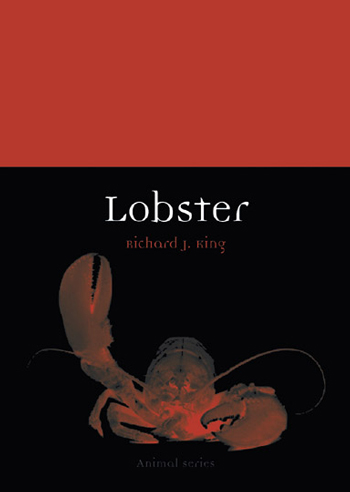B O O K R E V I E W
Where Do The Experts Learn More?
Reviewed by FV Staff

Lobster
By Richard King
Reaktion Books
216 pages; $19.95
The lobsterman with 40 years of hauling under his belt, the marine biologists with a career of research behind them, and the lobster-loving diner who enjoys a well placed arcane anecdote at a dinner table with friends and family, will all likely find something they didn’t know about lobster in “Lobster.”
The book has in it what a lot of lobstermen may already know, but it also has information obscure enough to be news to many of them. Lobster hasn’t changed much over the centuries of its recorded history as a food of interest to humans. But how it is caught and marketed, and (at least in Maine) managed, has changed a lot in the last 50 years.
Familiar to most Maine lobstermen is the development of lobster canneries in the late 1800s and its impact on the lobster stocks. Recorded landings dropped to near zero in many years until the 1940s. But how about Incans bringing treasure including lobster to ransom their leader held by the Spanish, an act documented in a 1565 engraving. The fact that the U.S. imports spiny lobster from nearly 50 countries, with Brazil regularly the largest supplier may surprise a few readers.
Richard King doesn’t have 40 years of fishing under his belt, but he was a sternman for a while before turning his attention to academic research on the sea and maritime studies. King teaches at the Maritime Studies Program at Williams College in Massachusetts and Mystic Seaport, Connecticut. The book is packed with facts and more in-depth coverage of various lobster topics. Beginning with a definition of lobster, an historical background with 16th century graphics, it then runs through to contemporary topics. These include the various efforts to prepare and serve lobster to a population that has grown up eating seafood sold on a white styrofoam slab, wrapped in clear plastic and looking nothing like the animal it once was.
King writes about the ancient societies that regularly ate lobster. He also relates stories of those who looked down on eating lobster as well as others who go for a big lobster to impress a girlfriend. Lobster-eating cultures around the world have ceremonies and practices that point out the importance of lobster to their society.
King’s lobstering experience was in New England and he has plenty of facts, anecdotes and history about Homarus americanus. He recently wrote that he has four shelves in his office overflowing with books on lobster. Some of these are likely the source of his references to lobster in ancient Greece, South America, Asia and colonial America. He also brings into the equation some of Maine’s most noted writers thereby revealing the historical details of lobster-fishing downeast and the evolving culture that surrounds it. Some of the classics he refers to are Sarah Orne Jewett’s The Country of the Pointed Firs (1896), Louise Dickenson Rich’s The Peninsula (1958), and Linda Greenlaw’s The Lobster Chronicles (2003). All are set in very different eras and express their own respect for the fishermen and people of downeast Maine.
Beyond the Maine classics he refers to works of fiction, visual art, and a big-city spin on lobster as a graphic/cultural image. Salvador Dali’s use of the lobster as sexual image in the 1930s might be a new factoid to a few lobster fans standing in line for a lobster roll.
The early colonial fishery that supplied Boston and New York shipped lobster in well boats. In the 1700s, the center section of a sailing vessel was walled off, and holes bored though the hull to flood that section for storing live lobster. None of the lobster carried by these boats were the blind lobster discovered in 2010 that inhabits 1,000 ft. depths off the Phillipines. But those 18th century sailors may have heard John Smith’s lusty A Rhapsody Upon A Lobster, penned in 1713.
King writes what Maine lobstermen may know, “On a much larger scale than anywhere else in the world the communities around the Gulf of Maine are dependent economically and even culturally on the harvest of lobster.” He goes on to write “Many believe that it is one of the few healthy wild fisheries—of any marine species—left on the planet.”
